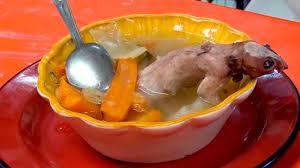35-year-old Debbie Taylor loves cooking big meals for her boyfriend and teenage son. But when the time comes to sit down at the table and dig in, she just pulls out a packet of Beef-flavored Monster Munch crisps instead. In fact, that’s about all she’s been eating for the past decade!
Debbie, a hotel chambermaid in Harlow, Essex, is so paranoid about food that she actually takes a packet of crisps when she goes out to restaurants, and munches on them while her boyfriend Gerald indulges in a traditional meal. She takes them everywhere. For example, when the boyfriend took her and her son Luke for a holiday in Spain, she actually packed a separate suitcase full of Monster Munch for the trip!
“I’m not a fan of the cooked meal,” she wrote in a life and style experience article in The Guardian a few years ago. “I’m much happier with Monster Munch crisps – beef flavor; I wouldn’t touch pickled onion. When I open the bag, I check if they have enough beef coating on them; if it’s not enough, I’ll throw them away.”





















